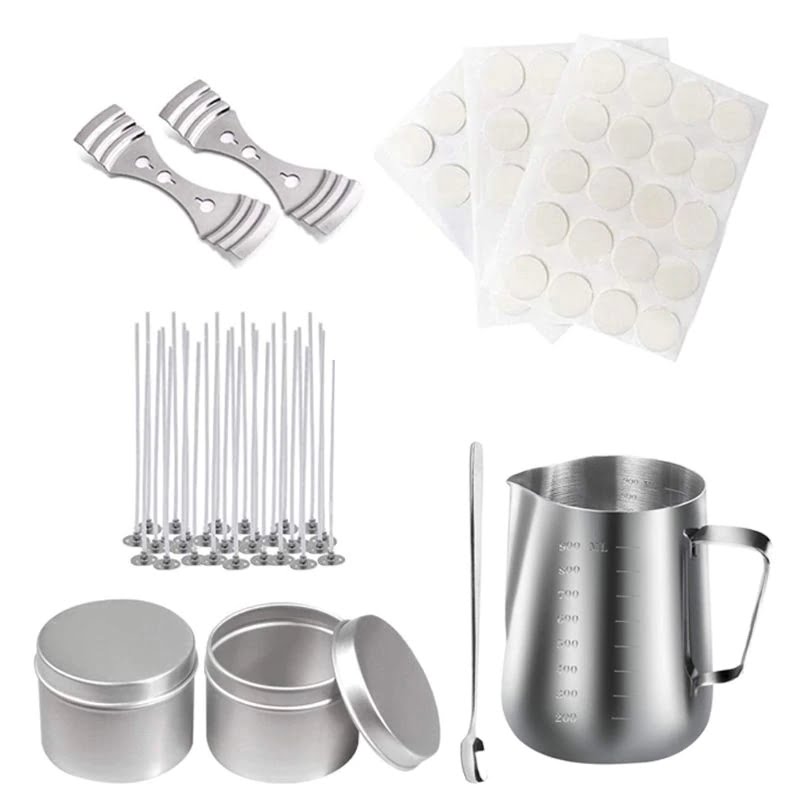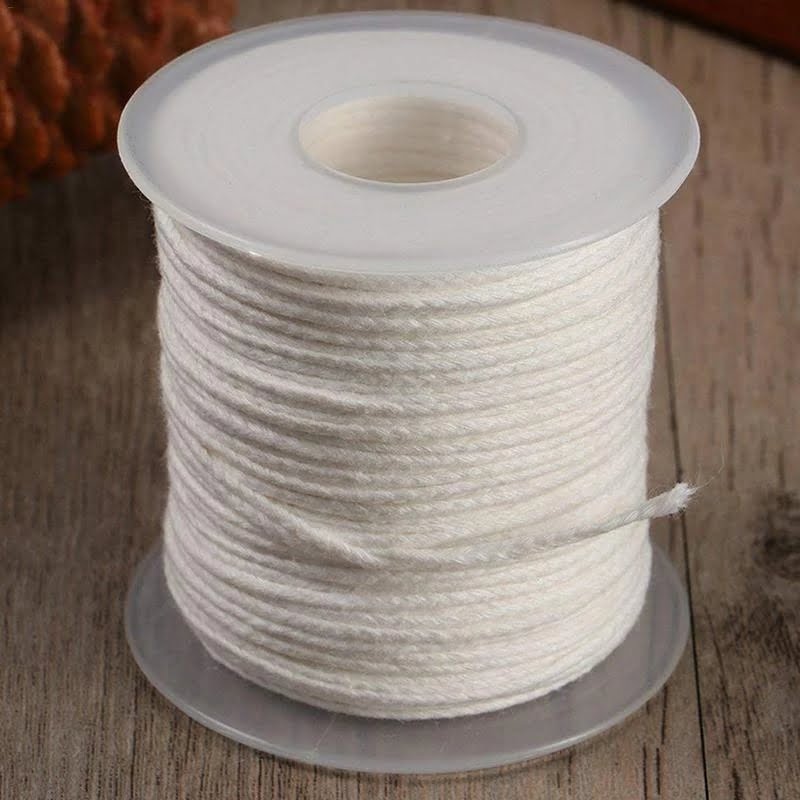Scented candles have become a staple in modern society, adorning our homes and creating a soothing ambiance. But when did they start making scented candles? This intriguing question invites us to delve into the rich history of candle making and explore how fragrance became an integral part of this ancient craft.
Candle making has been practiced since ancient civilizations, dating back thousands of years. Initially, candles were crafted from animal fat or beeswax, providing light in the darkness. As time went on, different materials such as tallow and spermaceti were used to improve burning properties. However, it wasn’t until later that scented candles emerged as a popular choice.
The transition to scented candles began with the inclusion of natural fragrances, such as essential oils and herbs, during the candle-making process. Early civilizations added these aromatic elements to their candles for both practical reasons and cultural significance. They believed that certain scents could ward off evil spirits or create a specific mood during religious ceremonies or rituals.
As we embark on this historical journey through the world of scented candles, we will explore various periods where these fragrant creations gained popularity. From Europe’s Renaissance period, where notable figures like Queen Elizabeth I were enthralled by perfumed candles, to the Industrial Revolution’s impact on mass production techniques that made scented candles accessible to all.
Come with us as we uncover the fascinating story of aroma-infused illumination and its enduring appeal throughout the ages. Together, we will discover not only the origins of scented candles but also their cultural significance and impact on contemporary society. So pull up a chair, light your favorite scented candle, and prepare to embark on a fragrant journey through history.
The Origins of Candle Making
The art of candle making dates back to ancient civilizations, where early cultures discovered ways to produce light using various materials. The origins of candle making can be traced back as far as 5,000 years ago to the ancient Egyptians. The Egyptians were among the earliest societies to develop advanced techniques for creating candles, using rushes soaked in animal fat or beeswax to form a wick that provided a steady flame.
Ancient Civilizations and Candle Production
Candle making quickly spread to other ancient civilizations, such as the Romans and Greeks. The Romans used tallow from sheep or cattle to make their candles, while the Greeks preferred beeswax. These early civilizations recognized the practicality of candles as a portable source of light, often using them during religious ceremonies or for nocturnal activities.
Variety of Materials Used in Early Candle Production
While animal fat and beeswax were the most commonly used materials in early candle production, different cultures also experimented with alternative substances. For instance, in India, cinnamon was utilized to create fragrant candles. In China, whale fat and fish oil were primary ingredients for candle making. It is fascinating to see how different cultures used readily available resources that varied across regions to create their own unique types of candles.
These early candle-making techniques laid the foundation for future developments in scenting candles. As civilization progressed and societal demands evolved, so did the art of producing scented candles.
The Transition to Scented Candles
The transition to scented candles marked a significant shift in the history of candle making. While candles had been used for practical purposes such as lighting and heating since ancient times, it was during this period that fragrance started to be incorporated into candle production. This development not only added a pleasing aroma to the candles but also held cultural significance in various civilizations.
Early use of fragrance in candles can be traced back to ancient Egypt and Rome. In Egypt, fragrant oils were blended with tallow or beeswax to create scented candles for religious rituals and burial ceremonies. The Egyptians believed that the pleasant scent would help guide the spirits of the deceased to the afterlife. Similarly, ancient Romans added fragrances like cinnamon or lavender to their candles during festive occasions or religious rituals, using them as offerings to gods.
As candle making techniques evolved over time, so did the methods of scenting them. In medieval Europe, essential oils and herbs began to be infused into melted wax before pouring it into molds. These scented candles were often used in churches and monasteries during religious ceremonies due to their aromatic properties, which were believed to enhance spiritual experiences and facilitate meditation.
With each passing era, more experimentation took place in the art of creating scents for candles. During the Renaissance period, Europe witnessed a surge in interest and appreciation for scented candles among aristocracy and nobility. Notable figures such as Queen Elizabeth I of England and Louis XIV of France were known for their love of scented candles and even used them as ornaments in their palaces.
While early methods relied on natural ingredients for scenting candles, the Industrial Revolution marked a turning point where technology played an instrumental role in enhancing production capabilities. Mass production techniques enabled large-scale manufacturing of scented candles, making them more accessible to people from all walks of life. The availability of affordable scented candles brought comfort and ambiance into homes on a wider scale than ever before.
The transition to scented candles not only brought about a sensory experience but also opened up new creative possibilities. It wasn’t until the late 19th century that synthetic fragrances were invented, introducing an entirely new range of scents for candle production. The synthetic fragrances allowed for greater control over the aromas and enabled the replication of natural scents that were otherwise difficult to obtain.
The journey from unscented to scented candles showcases how people throughout history sought to enhance their everyday lives with delightful fragrances. Today, the contemporary scented candle market offers an abundance of options for consumers. From floral and fruity aromas to exotic blends and seasonal favorites, there is a seemingly endless array of scented candles available to create ambiance, evoke memories, or simply enjoy their pleasing fragrance.
Renaissance of Scented Candles
The Popularity of Scented Candles in Europe
During the Renaissance period, scented candles experienced a renaissance of their own, gaining widespread popularity among the European elite. The use of scented candles became closely associated with wealth, elegance, and refinement, making them a desirable luxury item. The upper class would often burn scented candles to create an inviting atmosphere and mask unpleasant odors in their homes.
Notable Figures Enamored with Scented Candles
Several key figures during the Renaissance era were known for their love of scented candles. Queen Elizabeth I of England was particularly fond of aromatic candles and had a preference for delicate floral scents like rose and lavender. She even employed her own personal perfumer to create bespoke fragrances for her candles.
Another individual who greatly influenced the popularity of scented candles was Catherine de’ Medici, the queen consort of France. Catherine was known for her passion for fragrances and introduced many new scents to the French court. She regularly burned intricately scented candles during her elaborate social gatherings, leaving a lasting impression on those in attendance.
The Artistry and Innovation of Scented Candles
During this period, advancements in candle-making techniques allowed for greater creativity and innovation in scenting candles. Perfumers experimented with blending essential oils extracted from flowers, fruits, spices, and resins to create captivating scents that complemented the ambiance of noble households.
Additionally, artisans started incorporating dried herbs and blossoms into the wax itself or adorning the outside of a candle to enhance both its visual appeal and fragrance. Some popular choices included rose petals, lavender buds, and cinnamon sticks.
The Renaissance marked a significant turning point for scented candles as they transitioned from being primarily practical sources of light to objets d’art that brought both olfactory delight and aesthetic beauty into the European upper-class homes.
Industrial Revolution and Mass Production
The Industrial Revolution marked a significant turning point in the history of candle making, as it brought about advancements in technology and manufacturing processes. This period, which took place from the late 18th to early 19th century, revolutionized various industries, including candle production. With the invention of machines and the development of mass production techniques, scented candles became more accessible to the general public.
During the Industrial Revolution, traditional candle making methods that relied on hand-dipping or hand-pouring were gradually replaced by mechanized processes. Machinery such as candle molding machines and continuous dipping machines were introduced, increasing efficiency and output. This led to a significant reduction in production time and costs, making scented candles more affordable for a wider range of consumers.
In addition to these technological advancements, the Industrial Revolution also played a crucial role in expanding access to raw materials for scented candles. The discovery and extraction of paraffin wax from petroleum during this period provided manufacturers with an alternative to traditional wax sources like beeswax or tallow. Paraffin wax was cheaper and more readily available, further contributing to the mass production of scented candles.
The widespread availability of scented candles during the Industrial Revolution sparked their popularity among different social classes. As people began to embrace urbanization and modernity, scented candles became not only sources of light but also decorative items that enhanced ambiance and fragrance in homes. The ability to produce these candles on a larger scale meant that a greater variety of scents could be offered in the market, catering to varying preferences.
With the advent of industrialization in candle making came an increased demand for scents beyond essential oils and herbs. The synthetic fragrance industry grew rapidly during this time, providing candle manufacturers with an array of artificial fragrances to incorporate into their products. This marked a new era for scented candles as both traditional and novel aromas could now be replicated easily and consistently.
Overall, the Industrial Revolution revolutionized the scented candle industry by introducing mass production techniques, expanding access to raw materials, and fostering the development of synthetic fragrances. These advancements not only made scented candles more affordable and widely available but also enabled a greater diversity of scents to be enjoyed by consumers. The impact of the Industrial Revolution on candle making set the stage for the contemporary scented candle market we know today.
The Advent of Synthetic Fragrances
During the late 19th century, the world of scented candles underwent a significant transformation with the advent of synthetic fragrances. Prior to this groundbreaking innovation, candle makers relied on natural sources such as essential oils and herbs for adding fragrance to their products. However, the invention of synthetic fragrances brought about new possibilities and scents that were previously unimaginable.
Synthetic fragrances are artificially created compounds that mimic or enhance natural scents. They are often made through a chemical process that combines different aromatic ingredients to achieve specific scent profiles. This breakthrough allowed candle makers to create an extensive range of fragrances that were not limited by the availability or cost of natural resources.
One significant advantage of synthetic fragrances is their consistency in scent production. Unlike natural sources, which can vary in quality and intensity, synthetic fragrances provide a more standardized and reliable scent experience. This consistency made scented candles more appealing to consumers who sought a consistent ambiance in their homes or desired a particular fragrance that may not occur naturally.
The introduction of synthetic fragrances also sparked creativity among candle makers, enabling them to experiment with unique scent combinations and develop signature aromas. These new scents soon found popularity among consumers who craved distinctive and captivating fragrance experiences. Additionally, the affordability of synthetic fragrances compared to their natural counterparts made scented candles accessible to a broader market.
While some traditionalists may prefer the authenticity of natural scents, synthetic fragrances continue to dominate the scented candle market due to their versatility, reliability, and affordability. Candle enthusiasts now have a vast array of fragrance options at their disposal, ranging from classic floral notes to more complex and unusual blends. The advent of synthetic fragrances has undoubtedly played a crucial role in shaping the contemporary landscape of scented candles.
| Advantages | Disadvantages |
|---|---|
| Consistency in scent production | Lack of authenticity compared to natural scents |
| Greater range of scent options | Potential for synthetic fragrance allergies |
| Affordability and accessibility | Dependence on chemical processes and resources |
Contemporary Scented Candle Market
The contemporary scented candle market has experienced significant growth and diversification in recent years. With the growing popularity of aromatherapy, home decor, and self-care practices, scented candles have become a staple in many households and commercial spaces. This section will provide insights into the current market trends and consumer preferences for scented candles, as well as discuss the various types of scented candles available today.
In today’s fast-paced world, people are increasingly seeking ways to create calming and soothing environments within their homes. Scented candles have emerged as a popular choice for achieving this desired ambiance. The market for scented candles now offers a wide array of fragrances, catering to different preferences and moods. From floral and fruity notes to earthy and woody undertones, consumers can find scents that resonate with them on a personal level.
Furthermore, scented candle makers are experimenting with unique combinations of fragrance notes to create captivating aromatic experiences. Blends that incorporate multiple essential oils or use unconventional scent profiles have gained traction among consumers seeking distinctive fragrances for their living spaces. Examples include citrus-infused floral blends, spiced herbal concoctions, and nostalgic childhood-inspired aromas.
| Market Trends | Consumer Preferences |
|---|---|
| – Growing demand for natural and organic ingredients in scented candles | – Preference for clean-burning candles made from sustainable materials |
| – Rise of personalized scents through custom-made or DIY candle kits | – Increasing interest in unique scent combinations |
| – Expansion of luxury scented candle brands targeting affluent consumers | – Emphasis on eco-friendly packaging and reusable containers |
With the advent of e-commerce and online marketplaces, scented candle enthusiasts can now explore a vast selection of brands and fragrances from the comfort of their own homes. In addition to traditional retail outlets, online platforms have contributed to the accessibility and growth of the scented candle market worldwide. This has allowed small-scale artisanal candle makers to thrive and share their unique creations with a global audience.
| Market Trends | Consumer Preferences |
|---|---|
| Increase in demand for natural and organic ingredients | Preference for clean-burning candles |
| Growth of luxury scented candle brands | Emphasis on eco-friendly packaging |
| Rise of personalized scents through custom-made or DIY kits | Increasing interest in unique scent combinations |
Conclusion
During the late 19th century, a significant breakthrough occurred in the world of scented candles with the invention of synthetic fragrances. Prior to this innovation, the scents used in candles were primarily derived from natural sources such as essential oils and herbs. However, the development of synthetic fragrances revolutionized candle making by offering endless possibilities for creating new and unique scents.
One of the key figures behind this advancement was French chemist Eugène Rimmel, who is widely credited with inventing the first commercially successful synthetic fragrance in 1860. Rimmel’s discovery paved the way for other chemists to experiment with creating a diverse range of scents that could be used in candle production. With these synthetic fragrances, candle makers no longer had to rely solely on natural ingredients, opening up a whole new world of possibilities.
The introduction of synthetic fragrances had a profound impact on scented candle production. Candle makers now had access to an array of scents that were previously unattainable or too expensive to obtain naturally. This allowed them to create candles that mimicked the aroma of exotic flowers or other luxurious scents that appealed to consumers’ desires.
Today, synthetic fragrances are commonly used in scented candle production alongside natural ingredients. The combination of both provides manufacturers with even more versatility when it comes to creating captivating scents for their products. From fruity and floral aromas to rich musks and warm spices, there is a wide variety of scented candles available on the market today thanks to the advent of synthetic fragrances.
Overall, the introduction of synthetic fragrances marked a turning point in the history of scented candles. It not only expanded the range of possible scents but also made them more accessible and affordable for consumers around the world. This innovation continues to shape the contemporary scented candle market by offering an ever-growing selection of captivating aromas that can transform any space into a fragrant sanctuary.
Additional Resources and Recommendations
Conclusion:
In conclusion, the journey of scented candle making is rich and diverse, spanning centuries of history and cultural significance. From the early origins of candle making in ancient civilizations to the renaissance period when scented candles gained popularity in Europe, the art of scenting candles has evolved and adapted throughout time.
The Industrial Revolution brought about mass production techniques that led to the widespread availability of scented candles, while the invention of synthetic fragrances opened up new possibilities for unique scents.
Today, scented candles continue to be a beloved item in many households. They not only provide an enchanting aroma but also play a significant role in creating ambiance and setting a relaxing mood. Whether it’s a lavender-scented candle to promote calmness or a cinnamon-scented one for cozy winter evenings, there are various types of scented candles available to suit every preference.
For those interested in delving deeper into the history of scented candle making, there are several resources worth exploring. Books such as “The Perfume Garden” by Kate Lord Brown or documentaries like “A Brief History of Candle Making” offer fascinating insights into this artform’s evolution over time. Additionally, websites such as The National Candle Association provide comprehensive information on candle making techniques and fragrance options.
Lastly, for those seeking unique scented candle brands or fragrances, recommendations can be found at specialty retailers or online marketplaces. From small-batch artisanal brands to luxury fragrance houses, there is an abundance of options available to cater to different preferences.
Frequently Asked Questions
Where did scented candles start?
Scented candles can trace their origins back to ancient times, specifically to Egypt and China. In Egypt, the earliest evidence of candle use dates back to around 3,000 BCE. They were made from animal fats and embedded with reeds as wicks.
These early candles were primarily used for lighting rather than scenting the air. Meanwhile, in China, they utilized whale fat or beeswax as a source of fuel for their lanterns and ceremonial candles. Although scent was not a primary focus during these early years, it laid the groundwork for future developments.
What kind of candles were used in the 1800s?
In the 1800s, taper candles were predominantly used due to their affordability and ease of production. These candles were typically made from tallow or animal fat materials that were readily available at the time.
While these candles served practical purposes such as lighting households and churches, they lacked any intentional fragrance or scent enhancements that we associate with scented candles today.
What did medieval candles smell like?
Medieval candles didn’t possess the delightful fragrances we now associate with scented candles. During this era, most commonly used candles were made from beeswax or tallow obtained from animal fats like beef or mutton suet. The natural scents inherent in these materials would have been relatively mild compared to modern aromatic blends found in scented candles today.
Their primary function was still illumination rather than perfuming spaces. However, some religious ceremonies incorporated aromatic resins like frankincense or myrrh into wax formulas to add a subtle scent element during worship rituals and other sacred events.

Welcome to my candle making blog! In this blog, I will be sharing my tips and tricks for making candles. I will also be sharing some of my favorite recipes.





